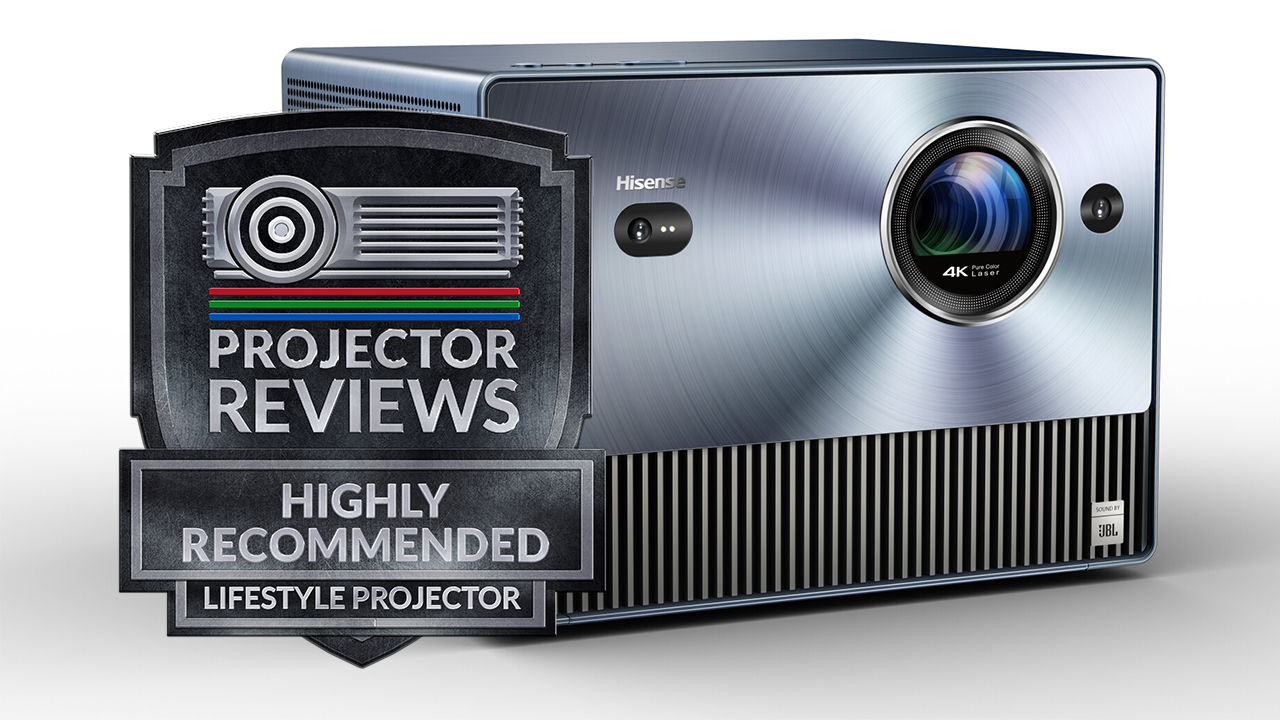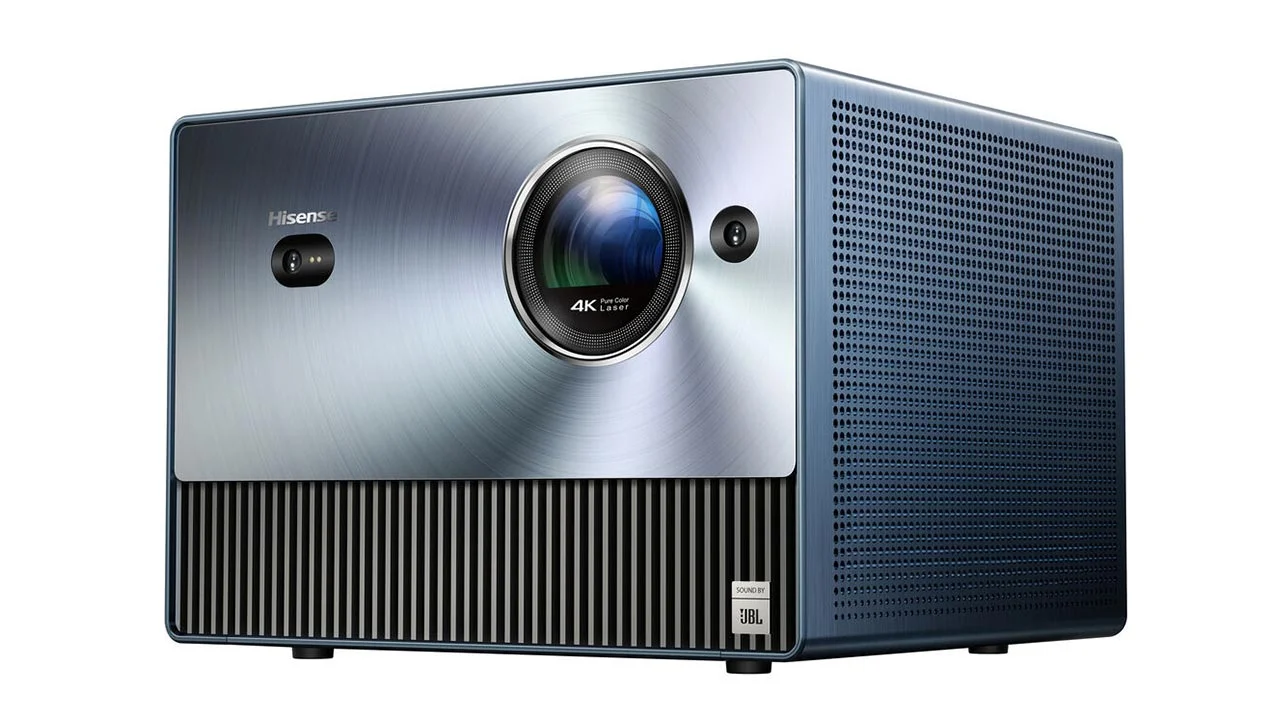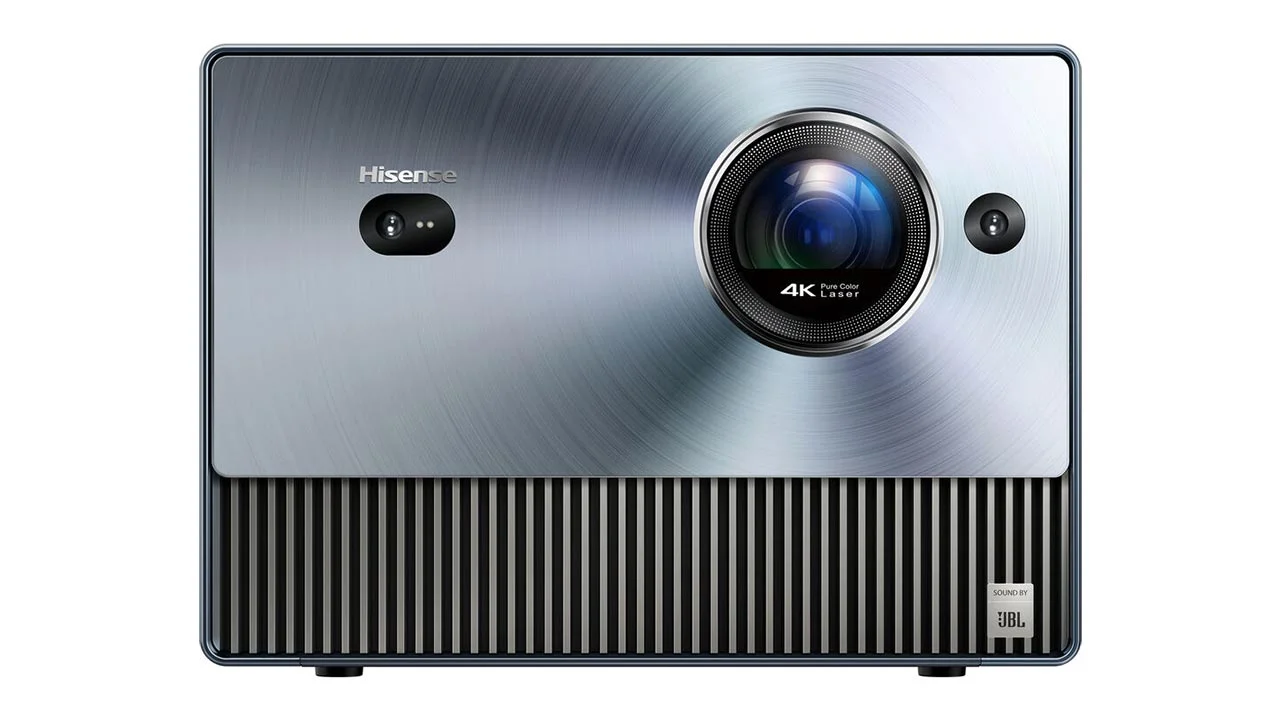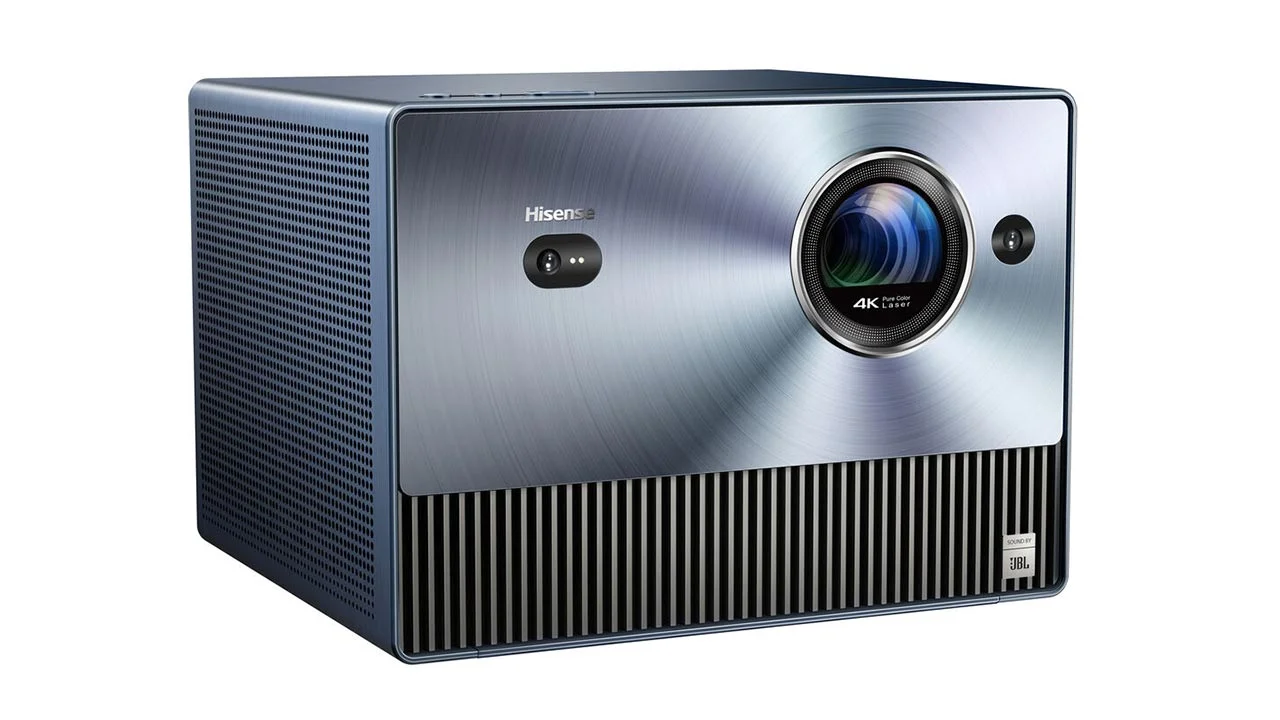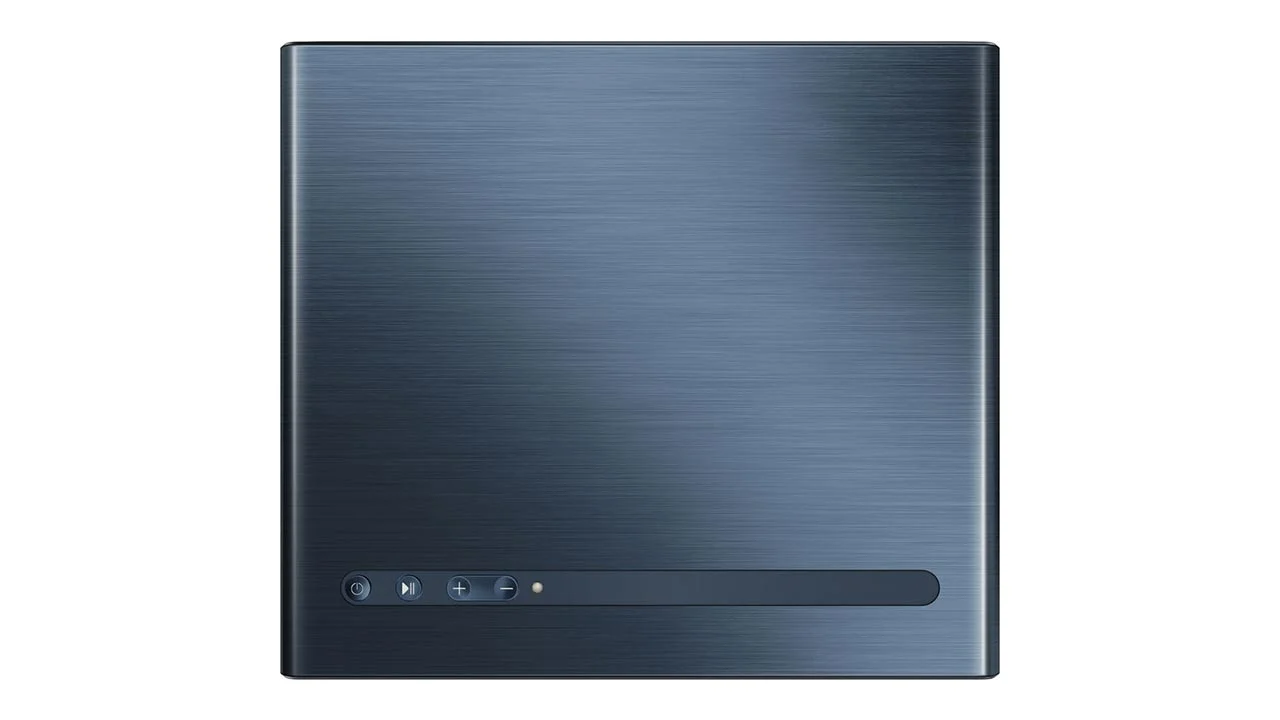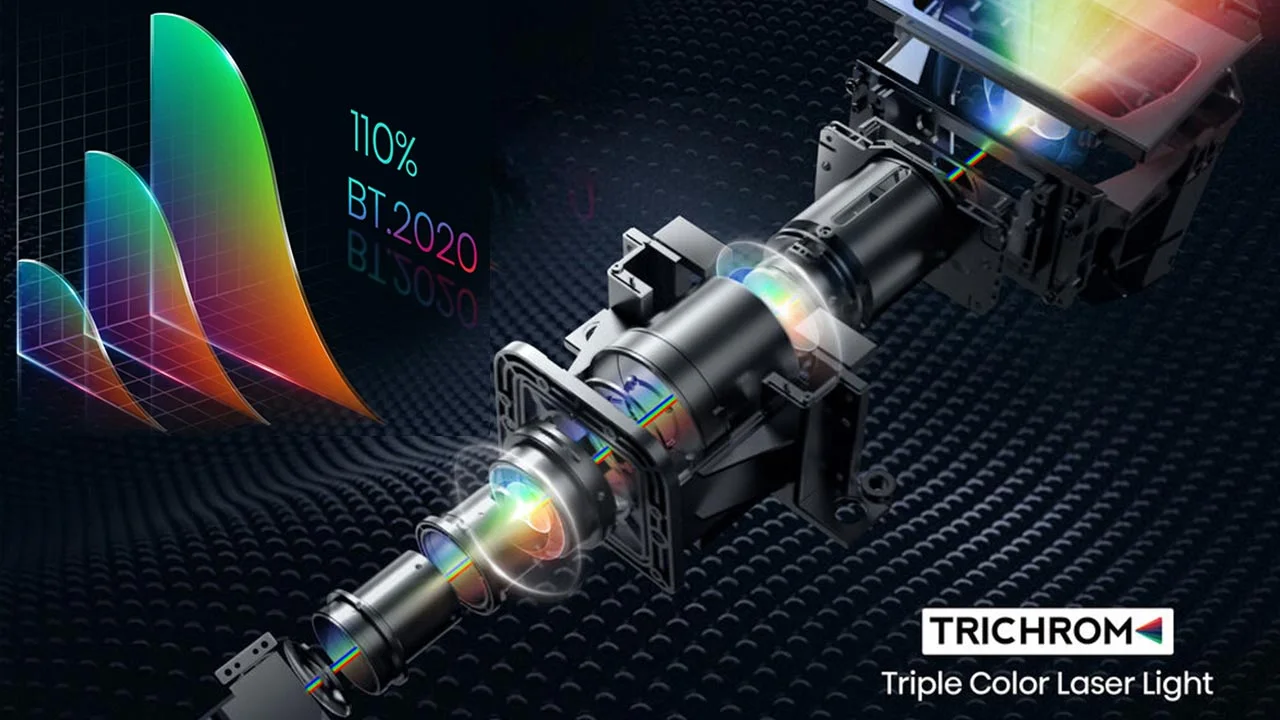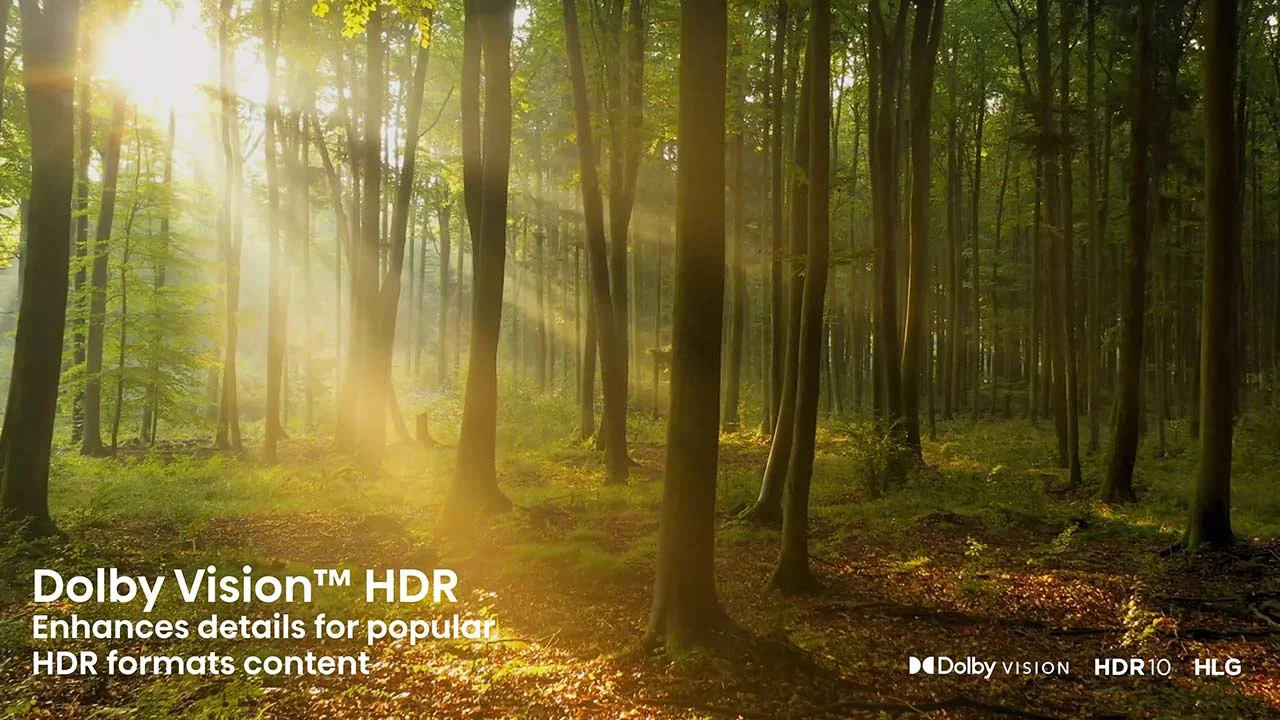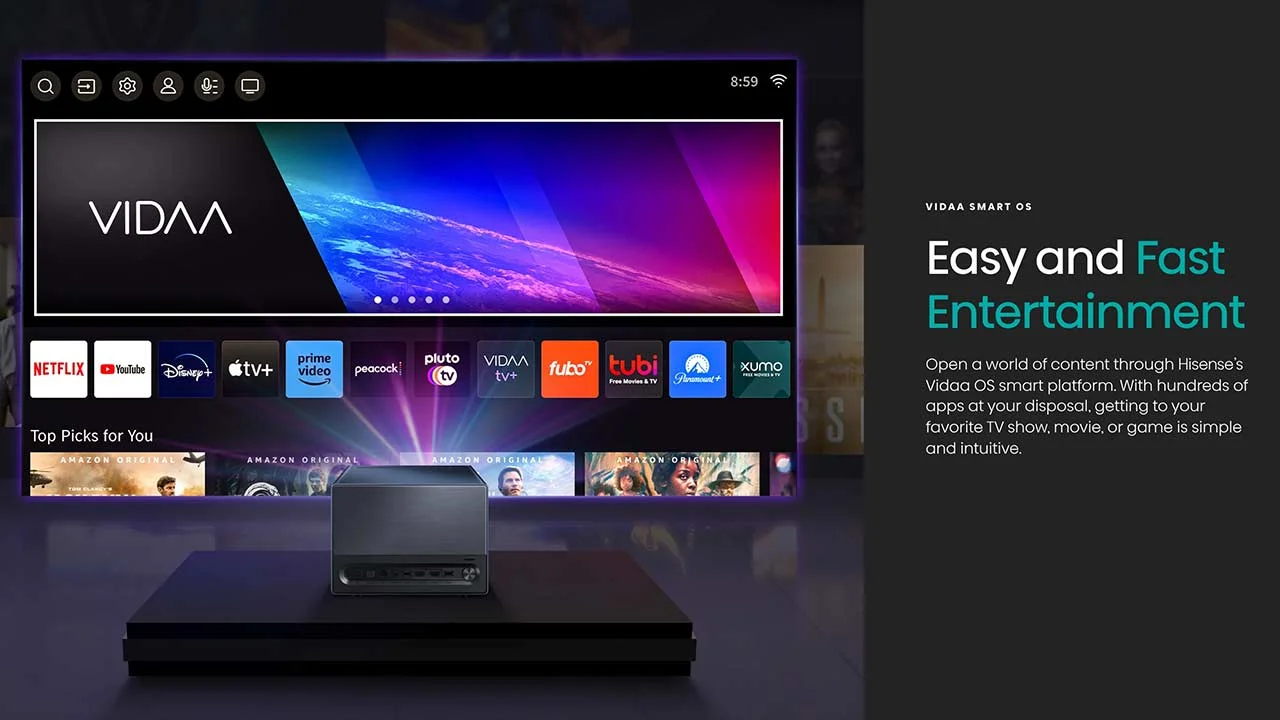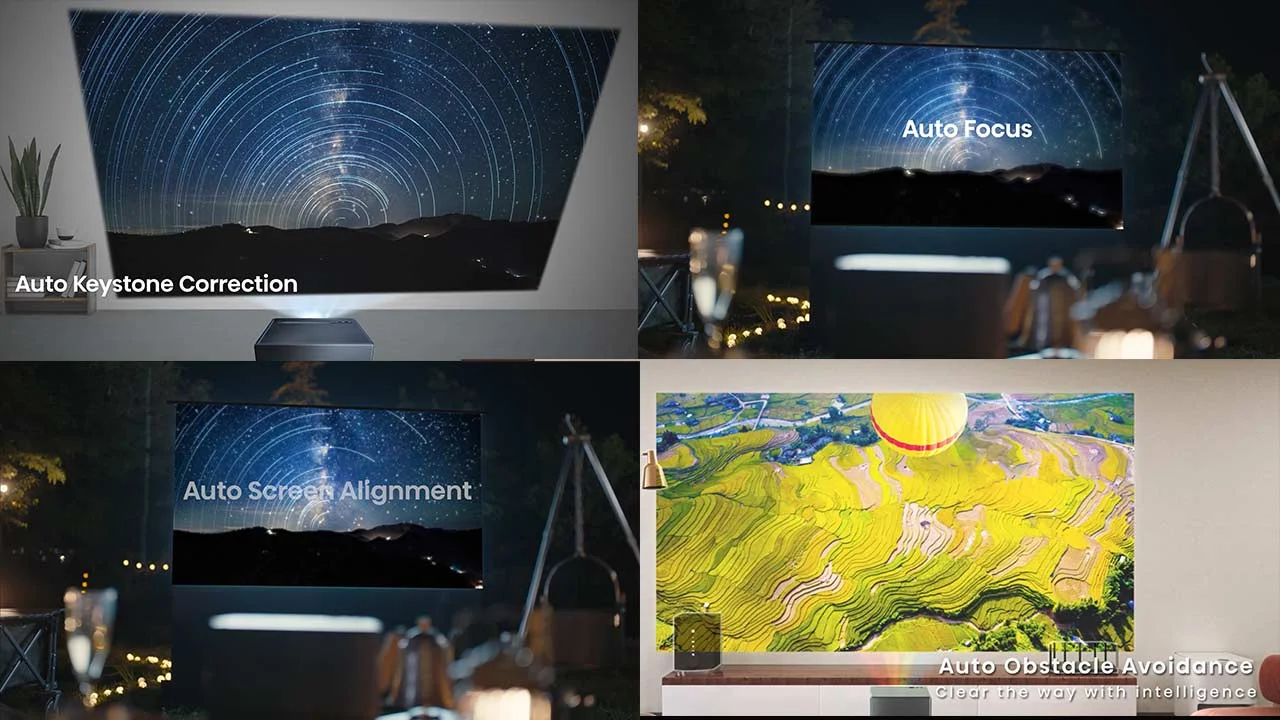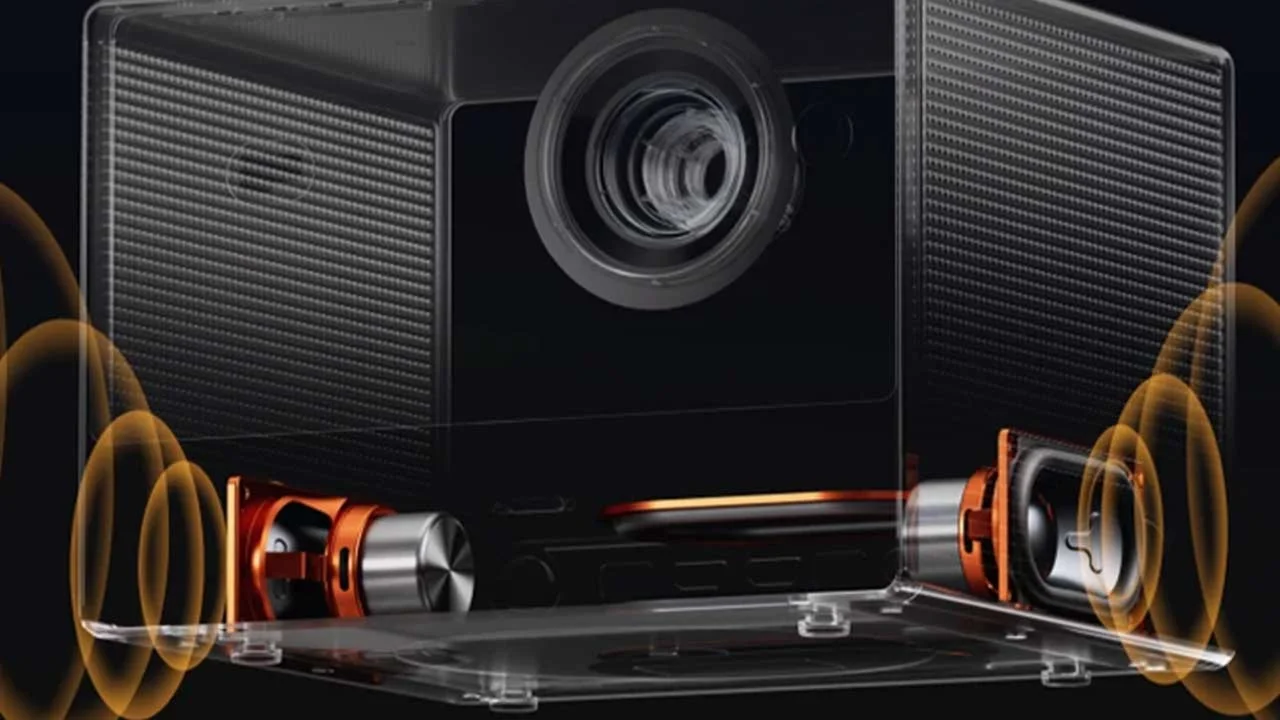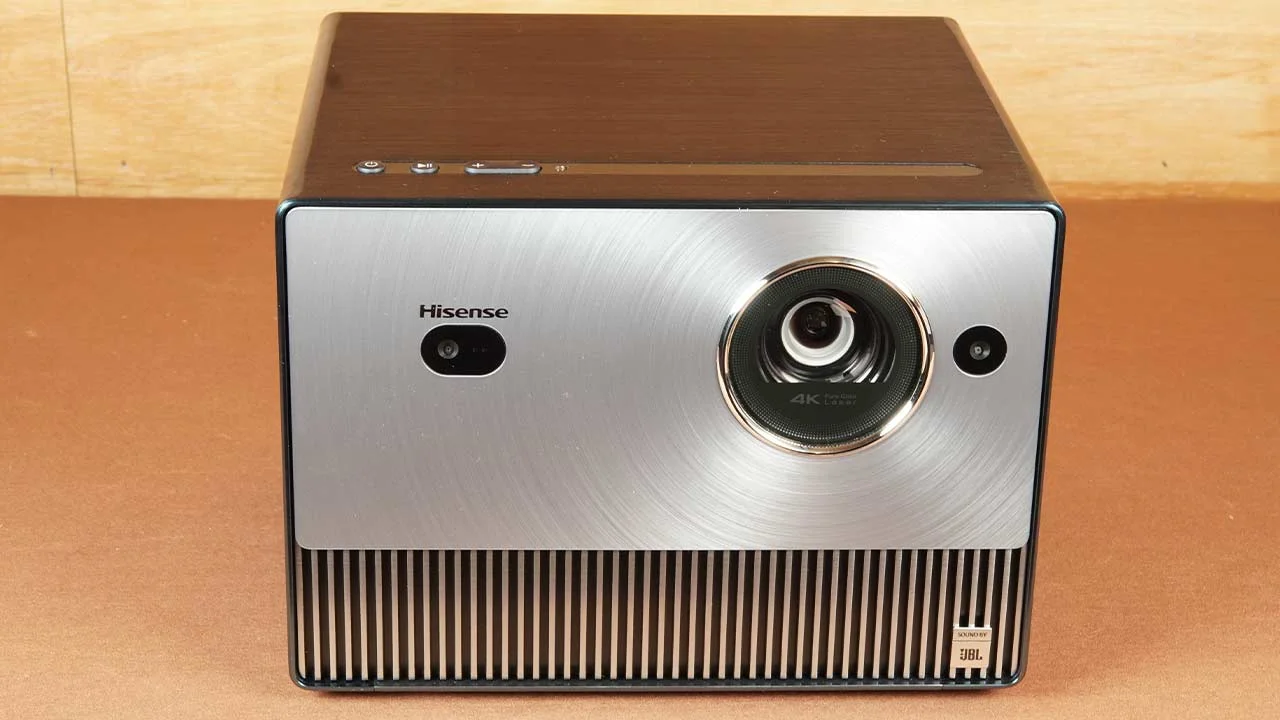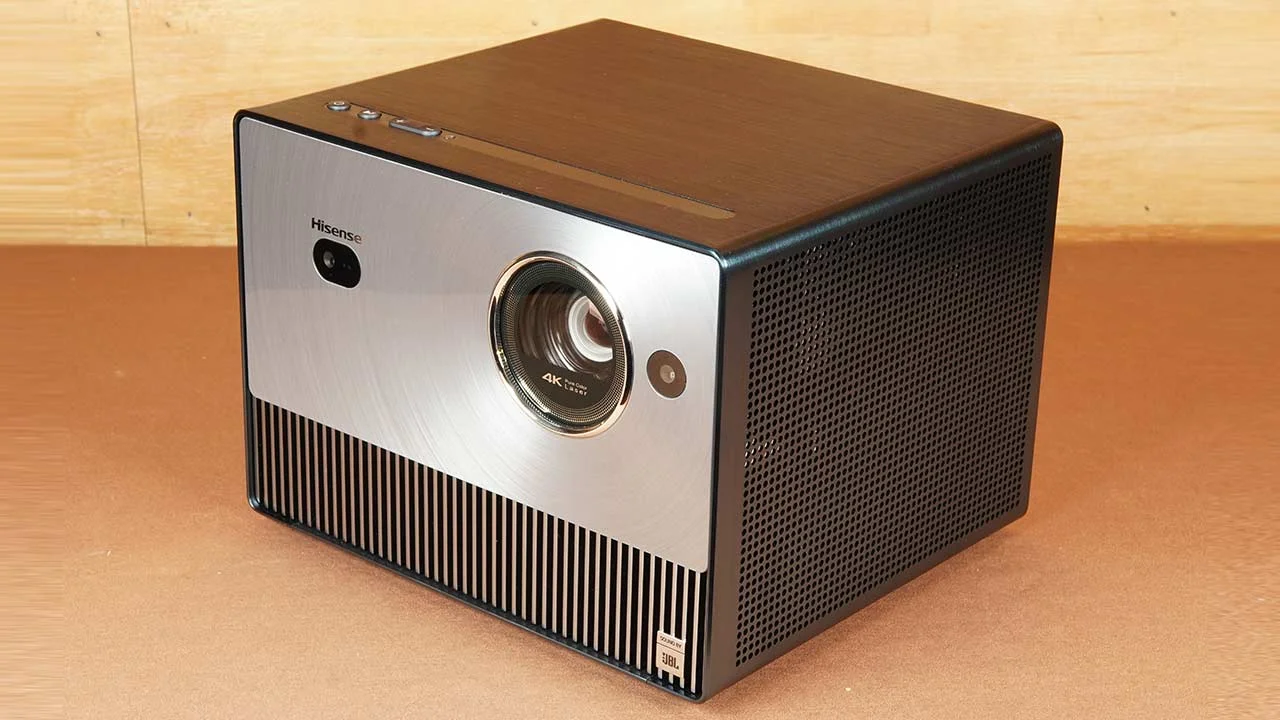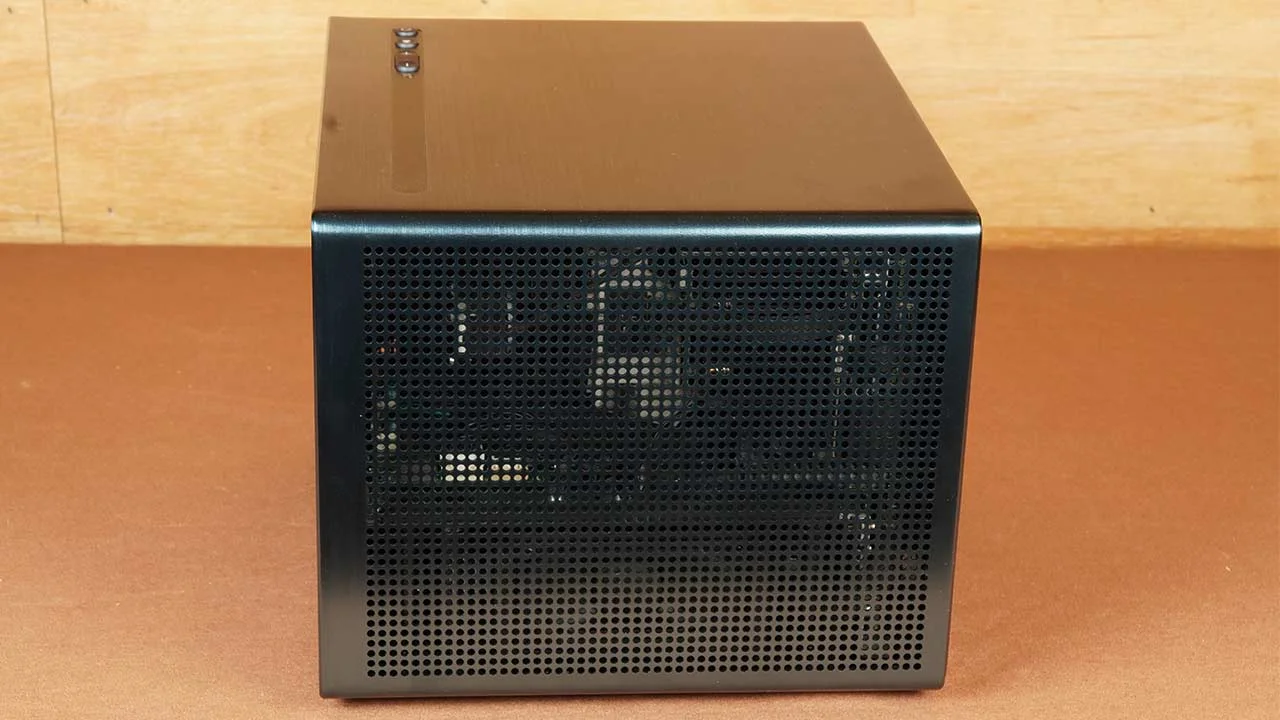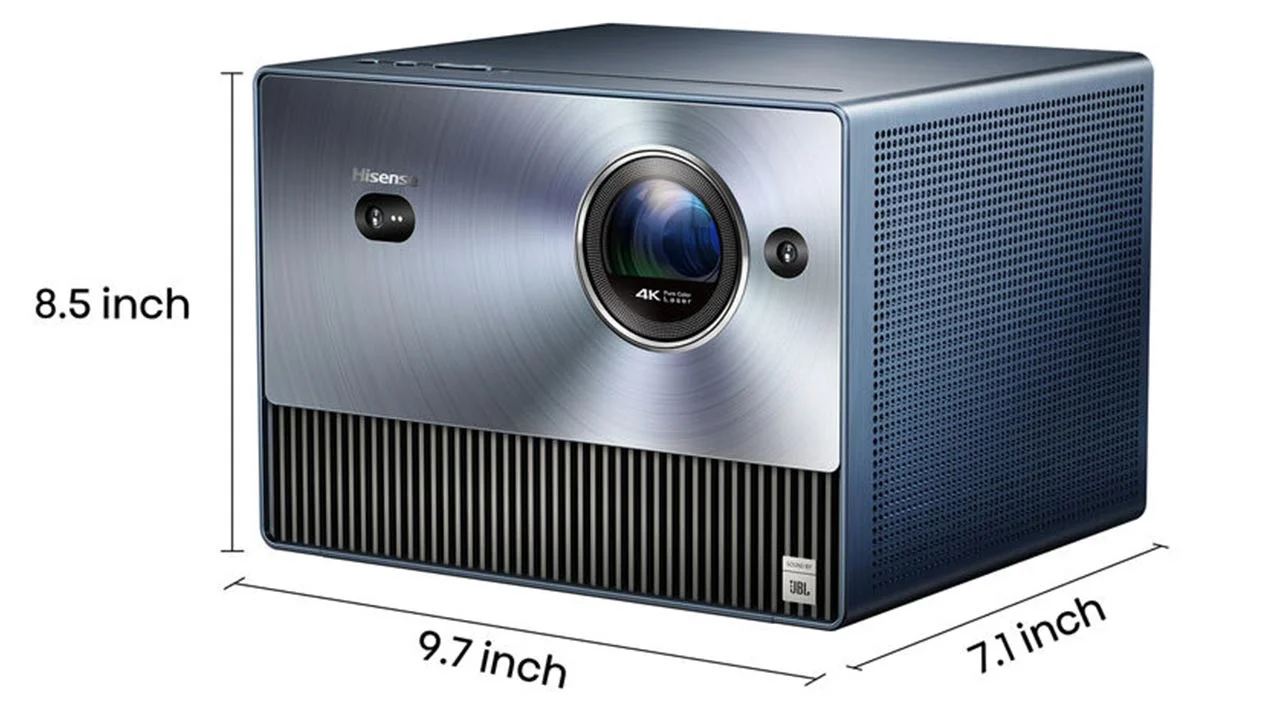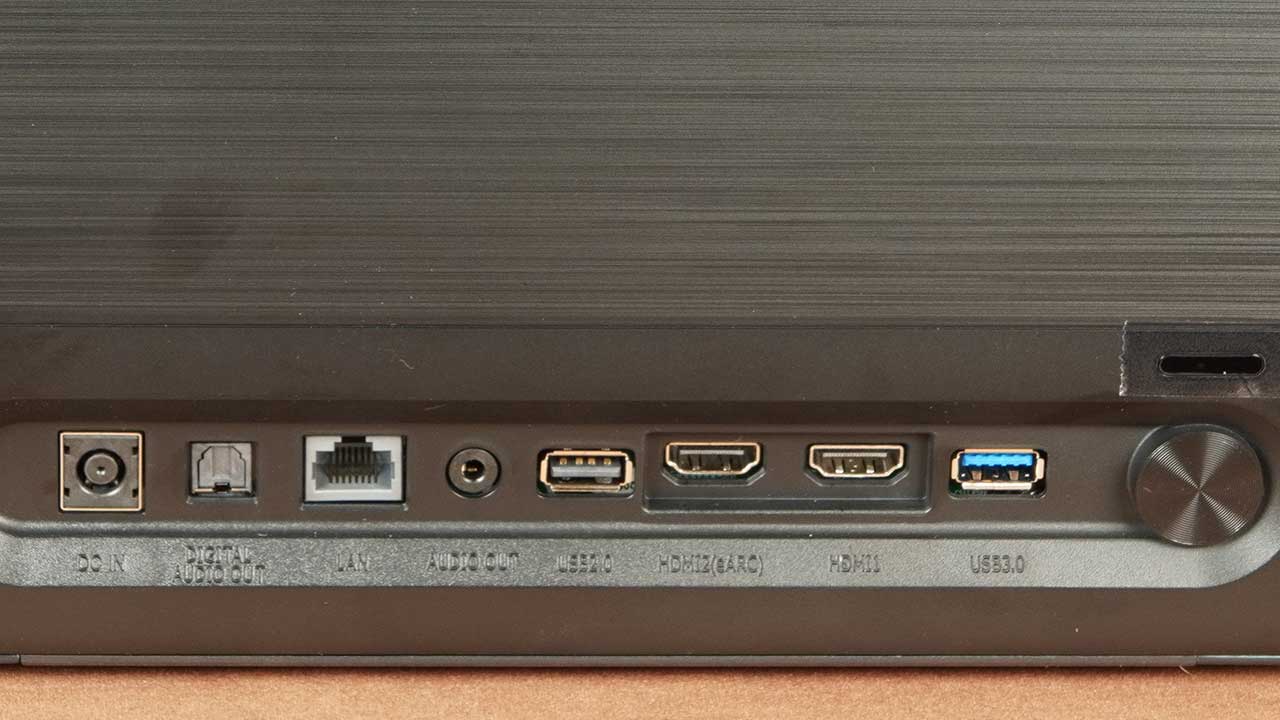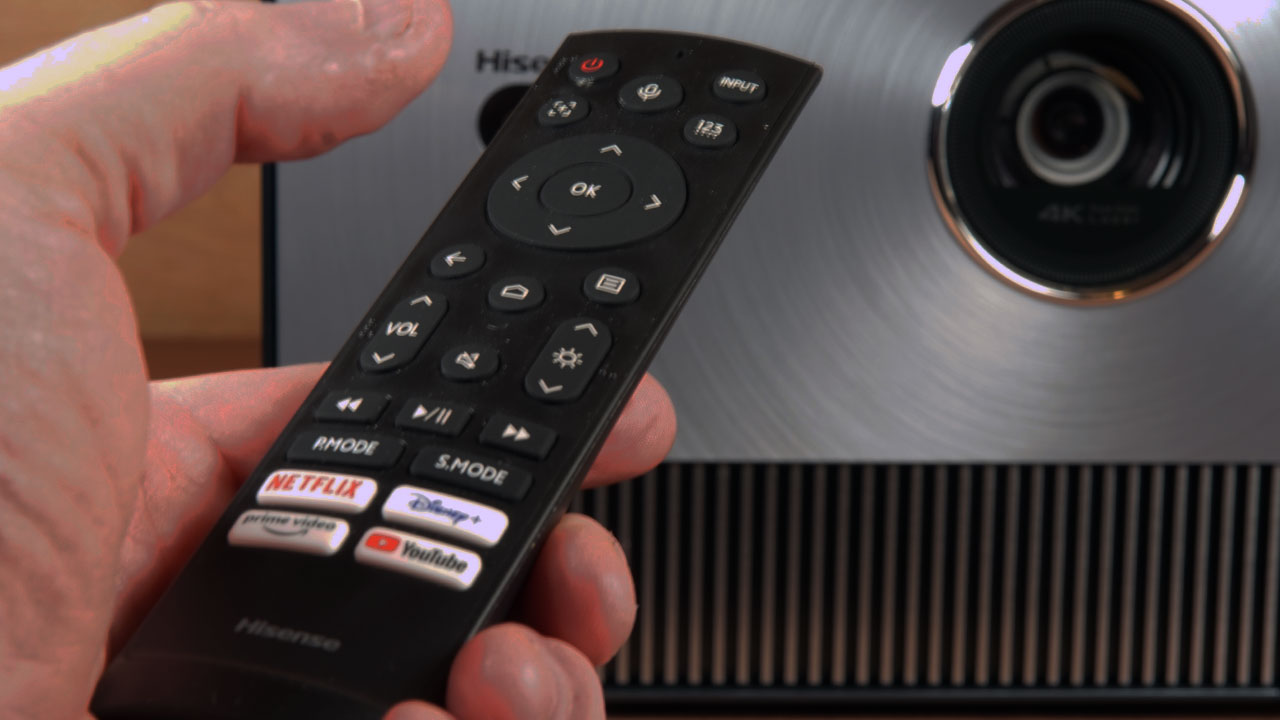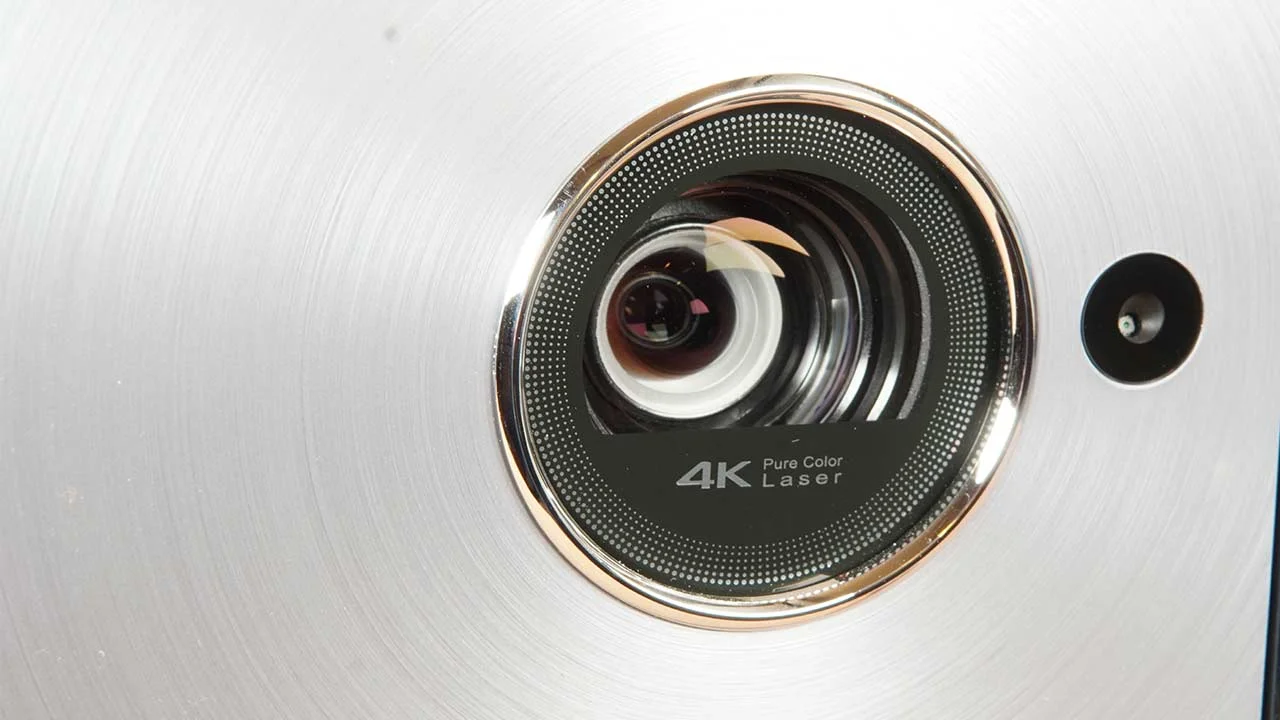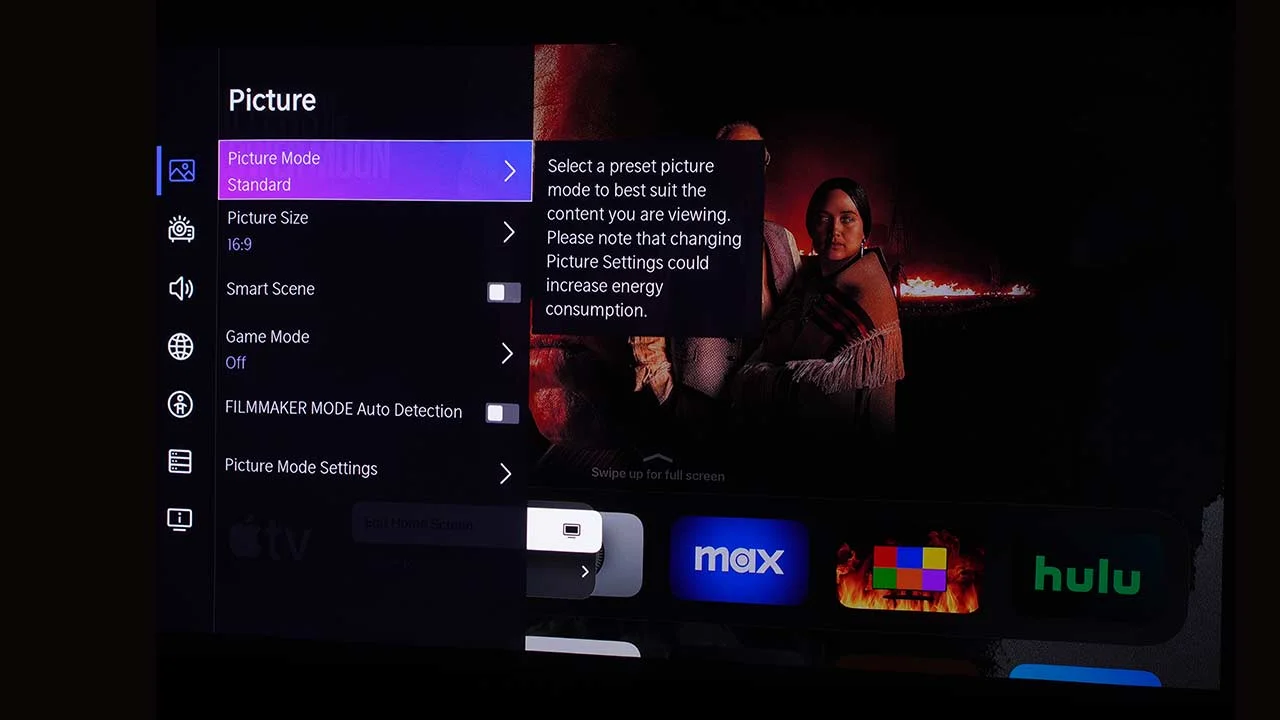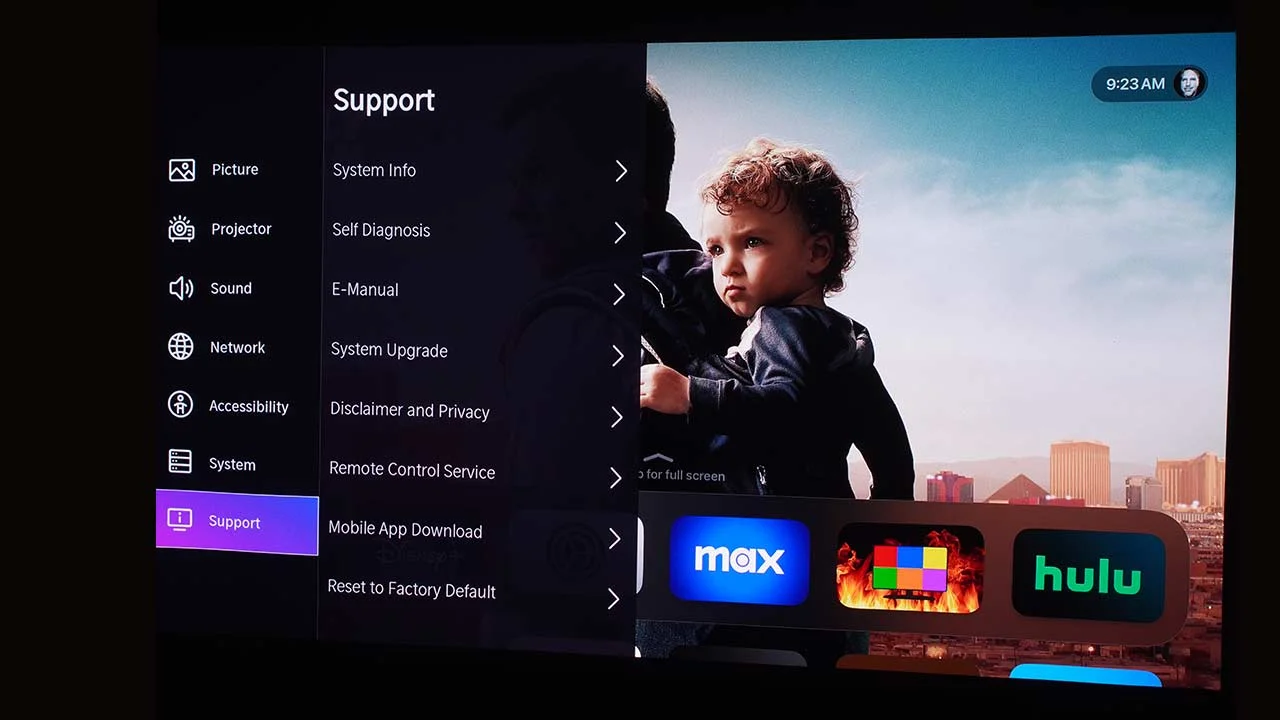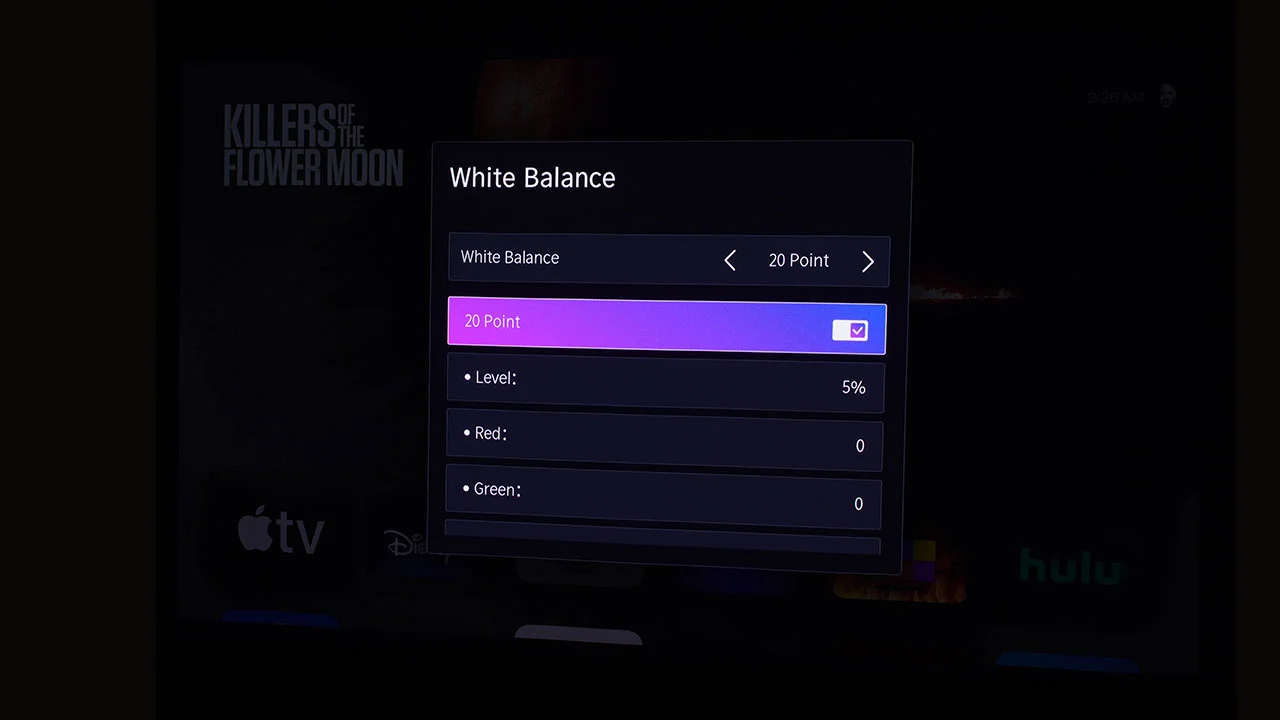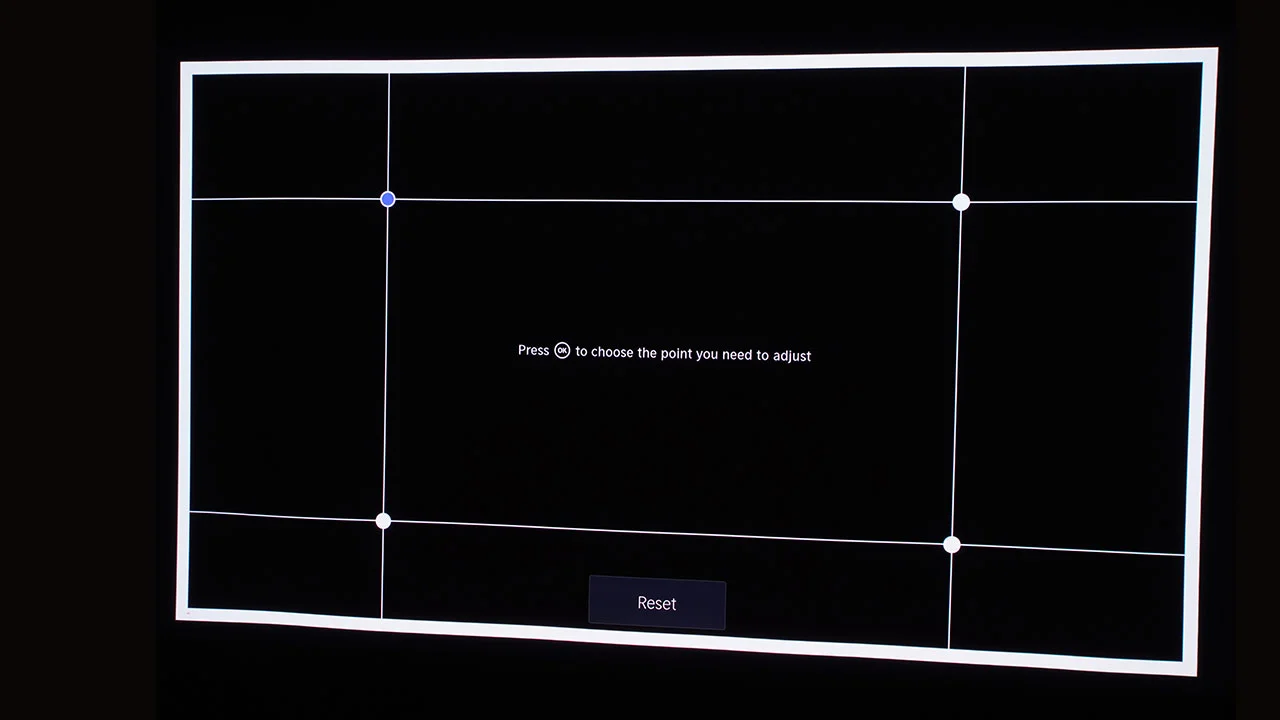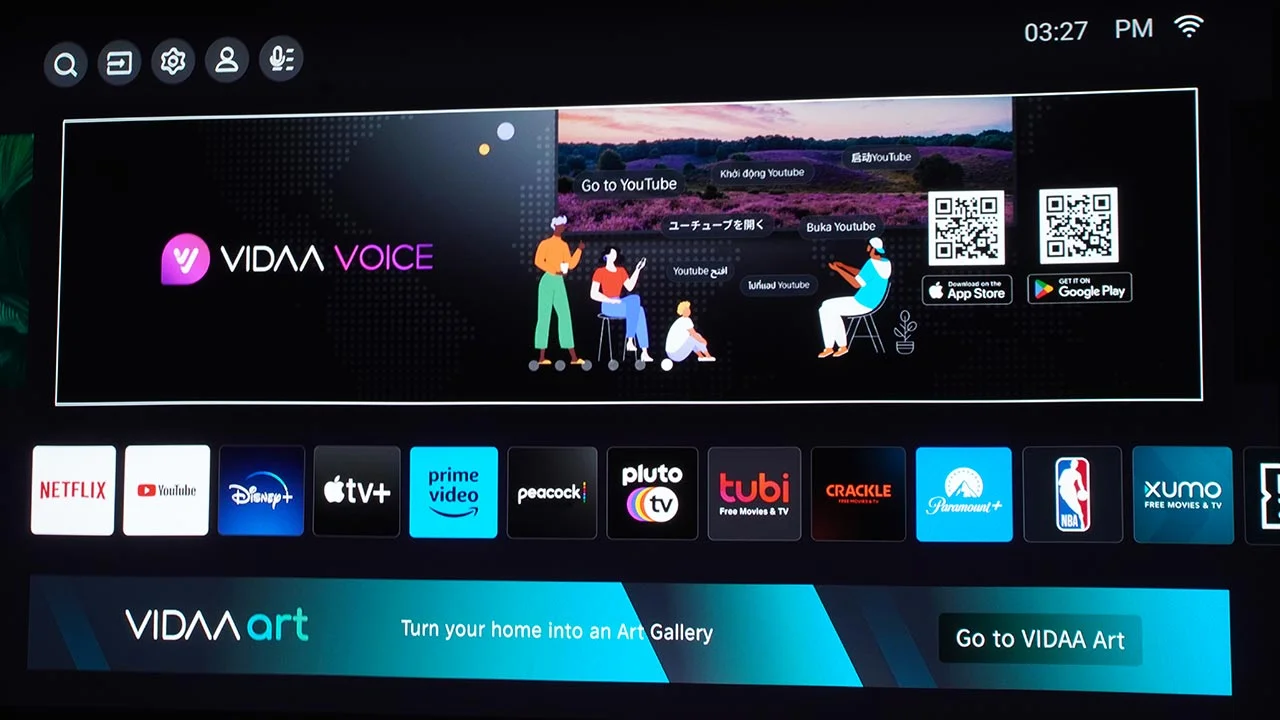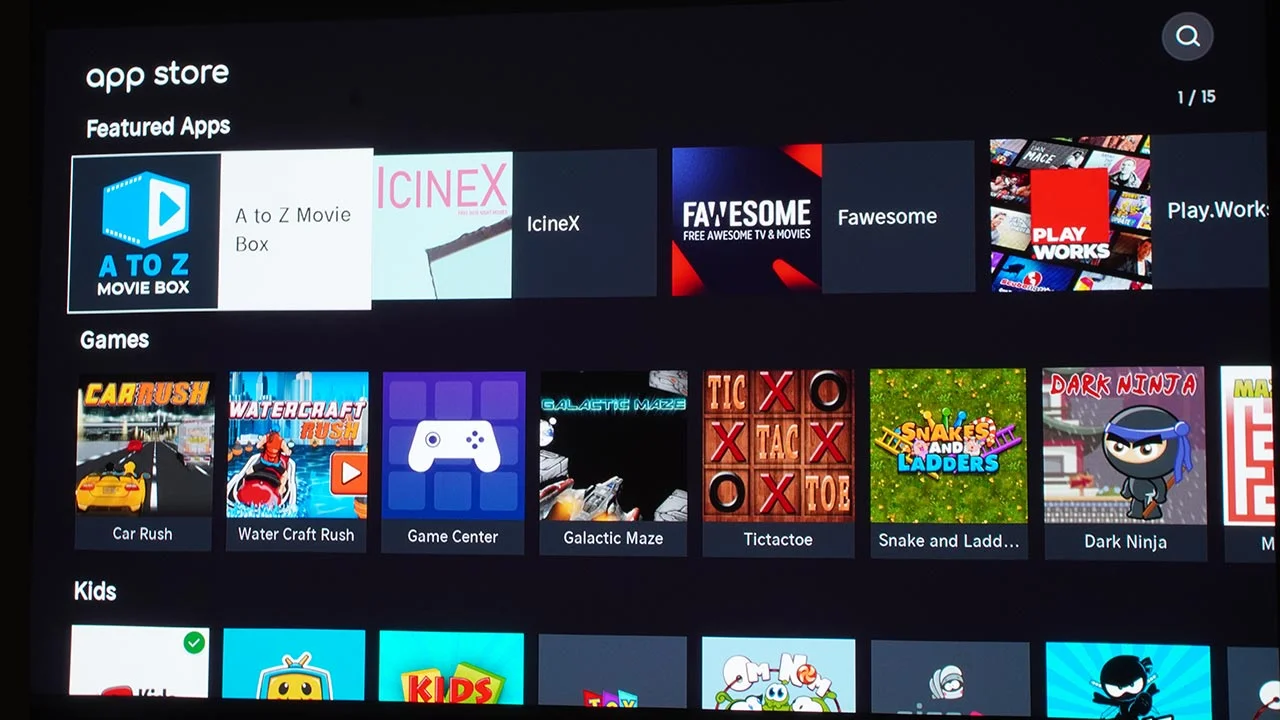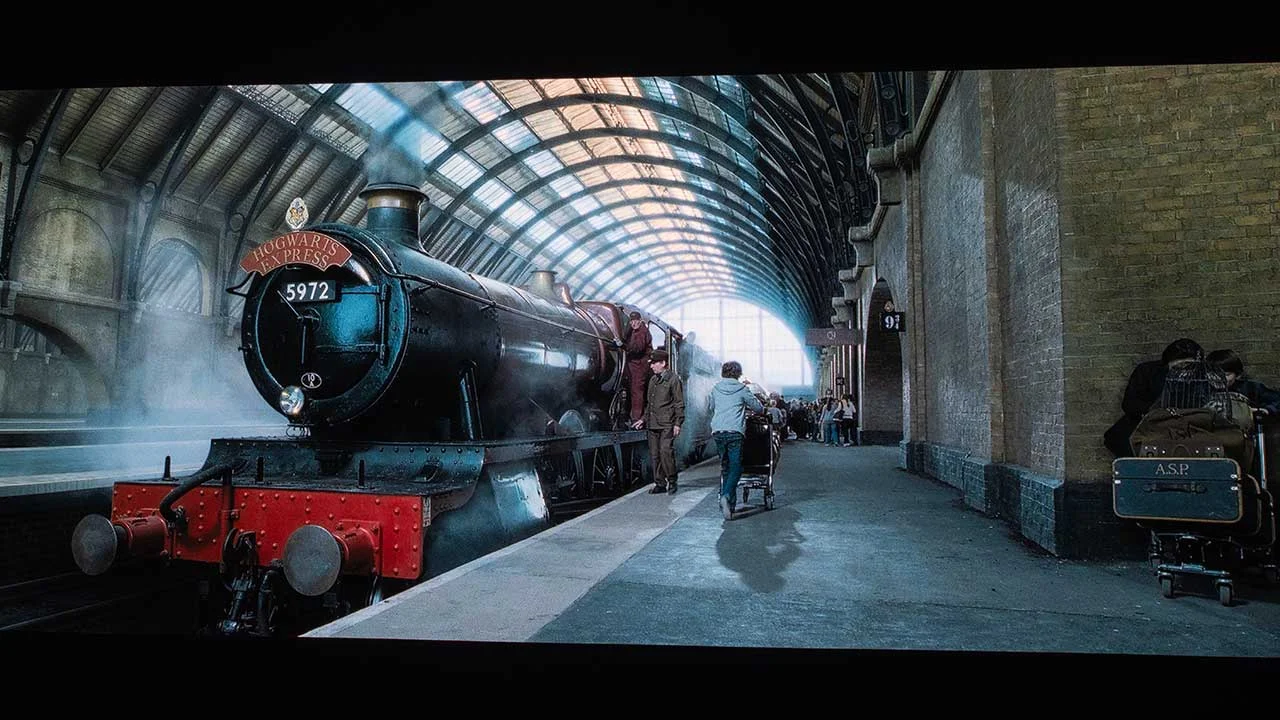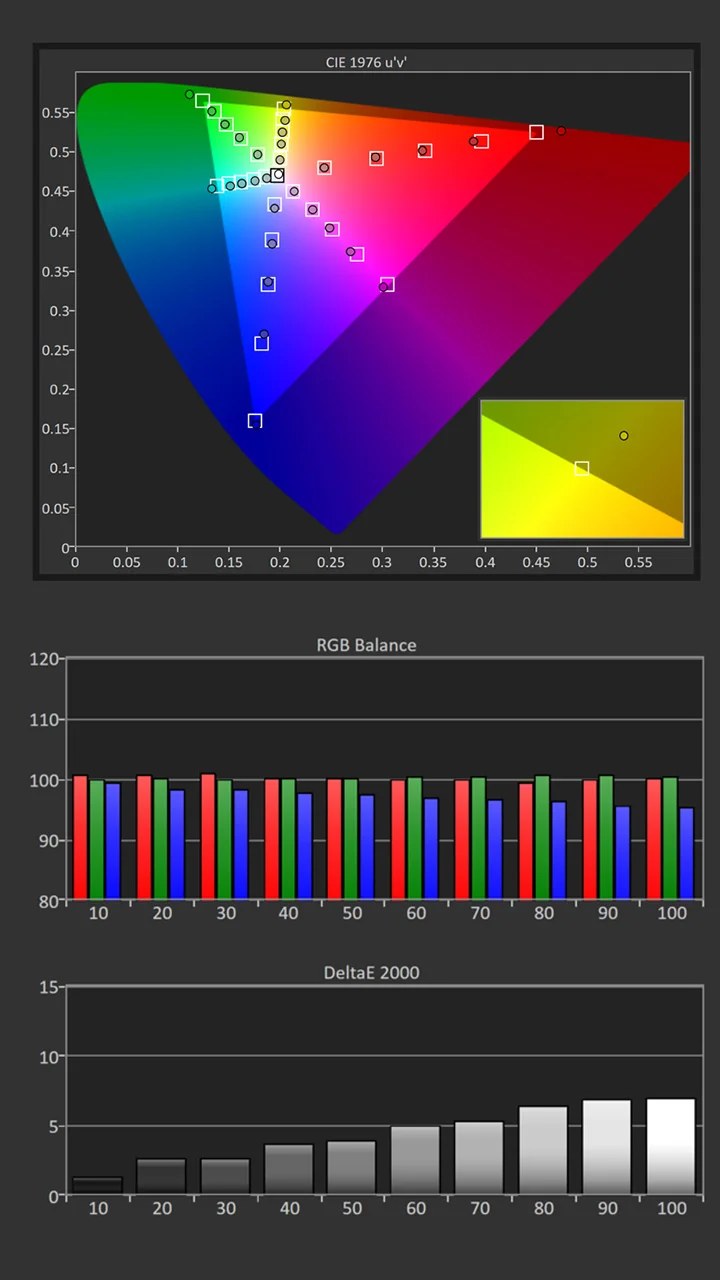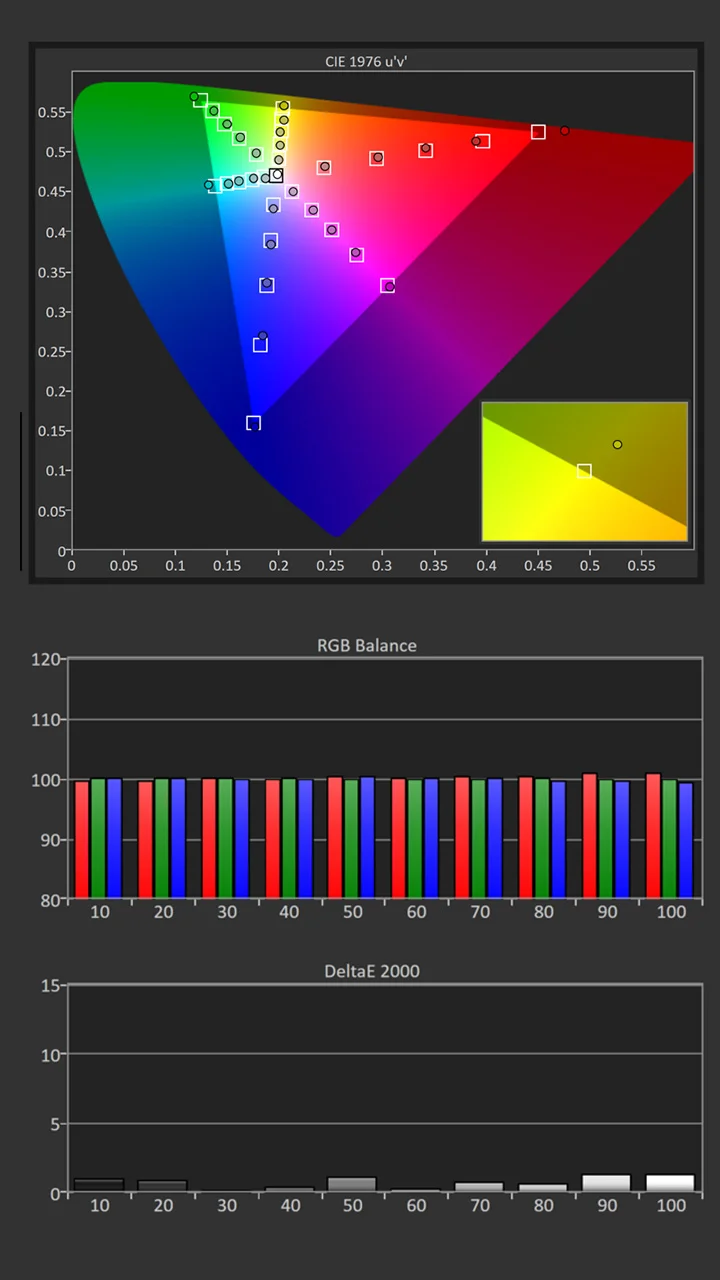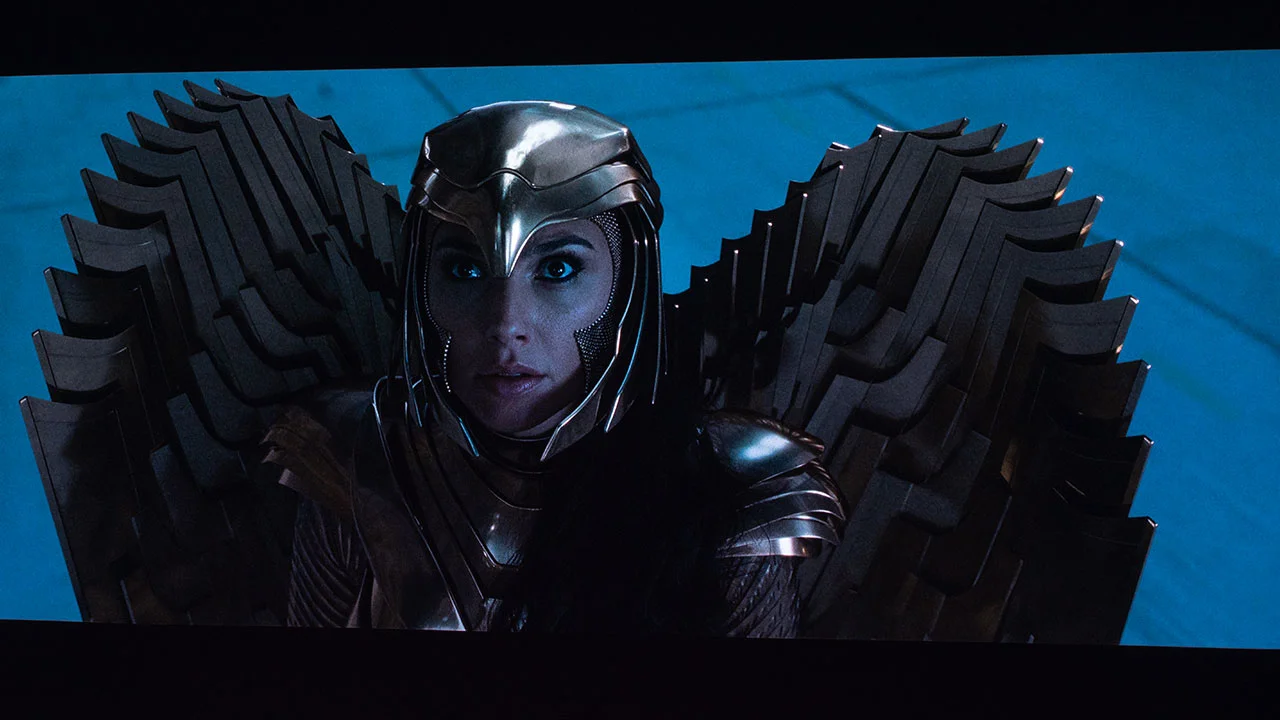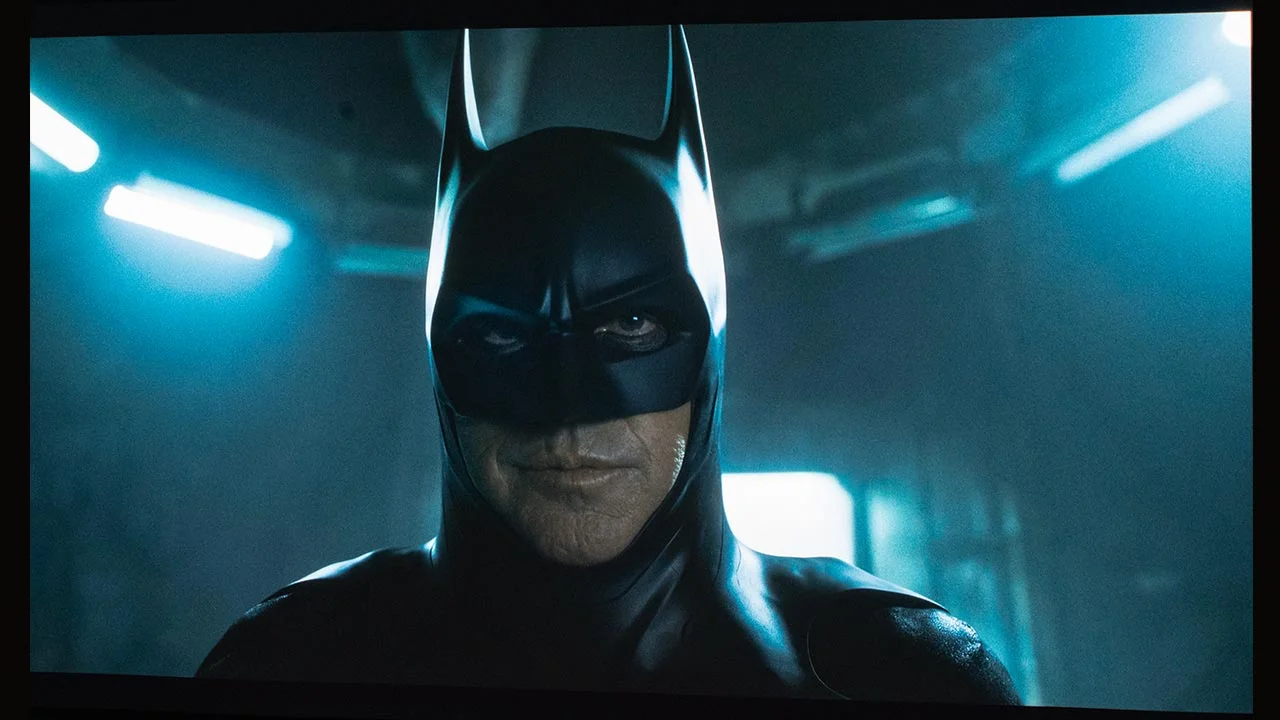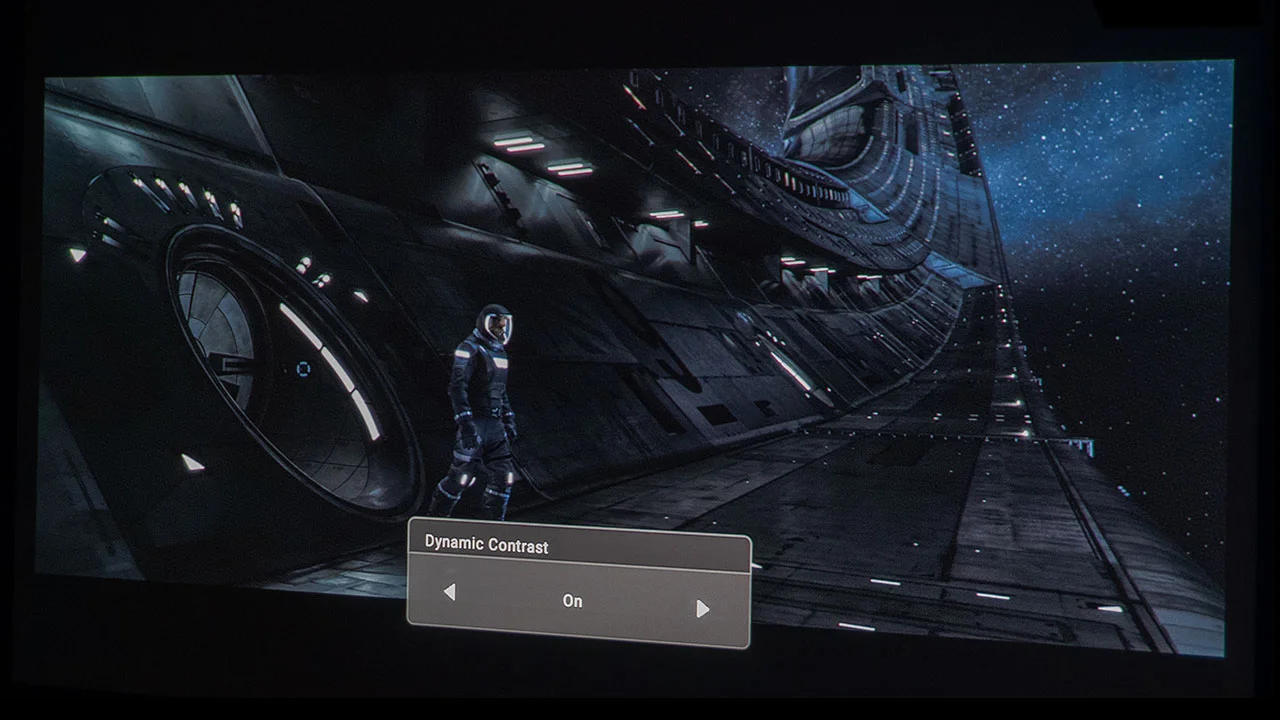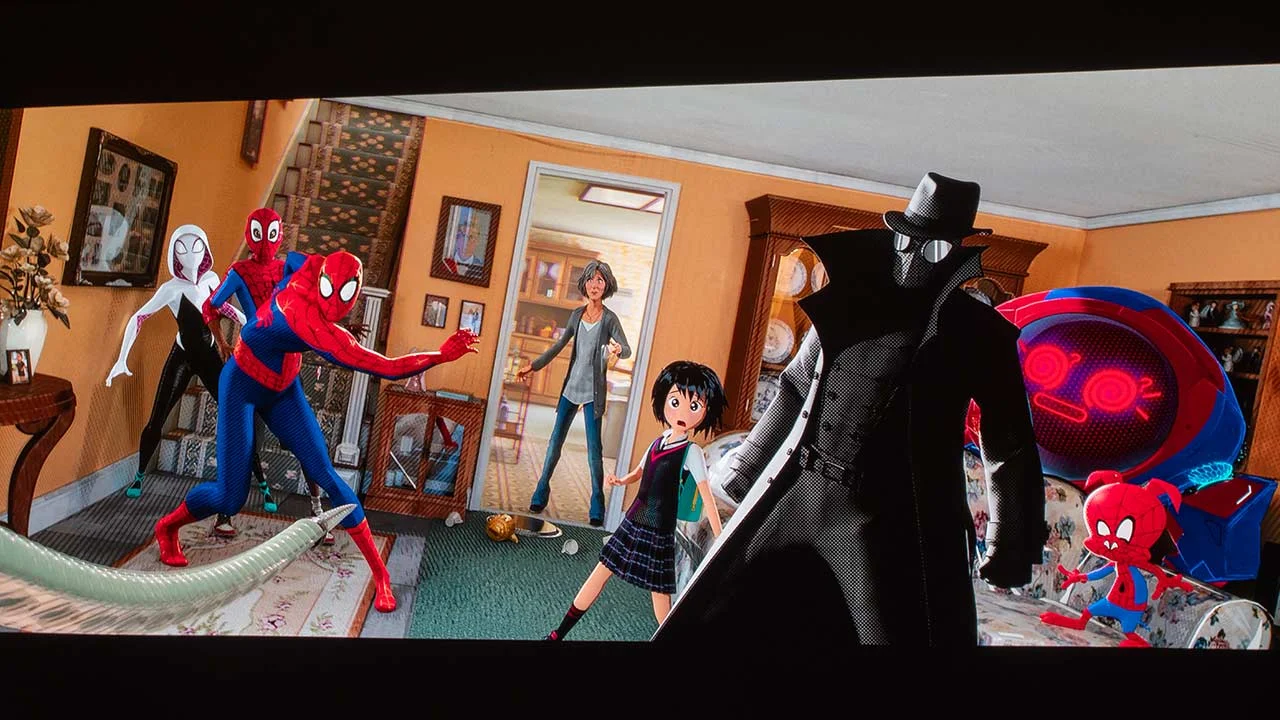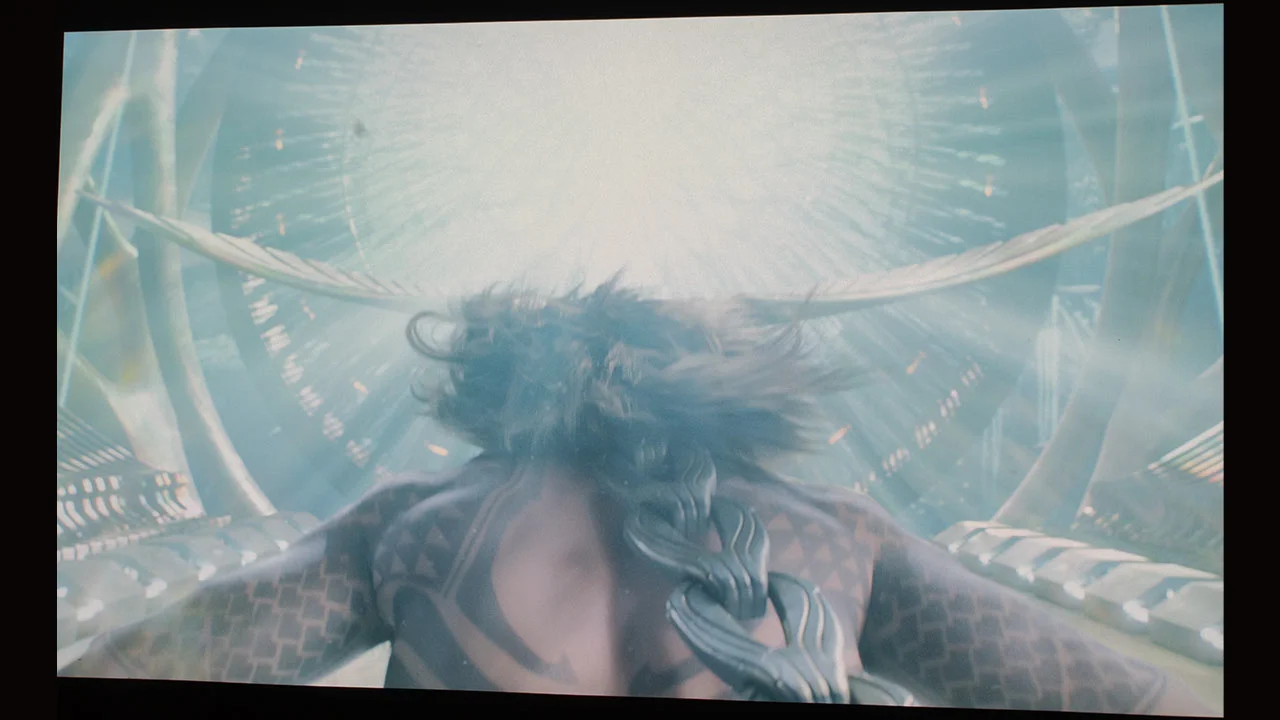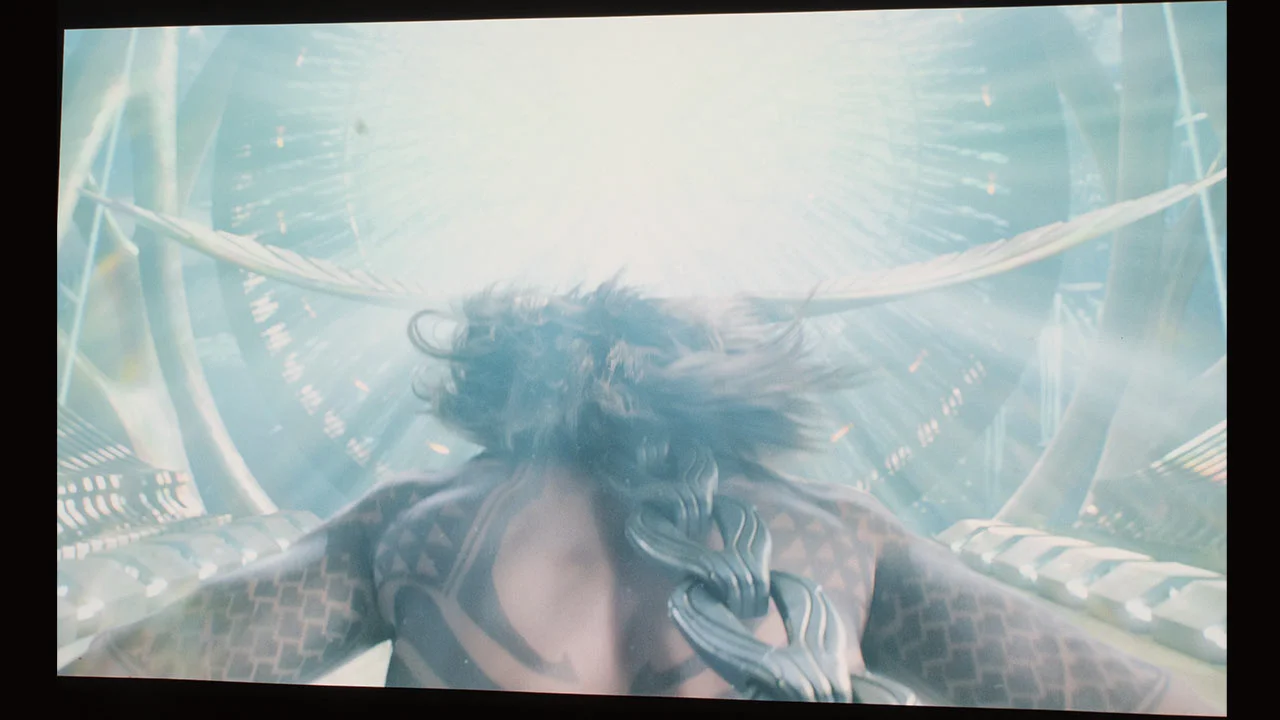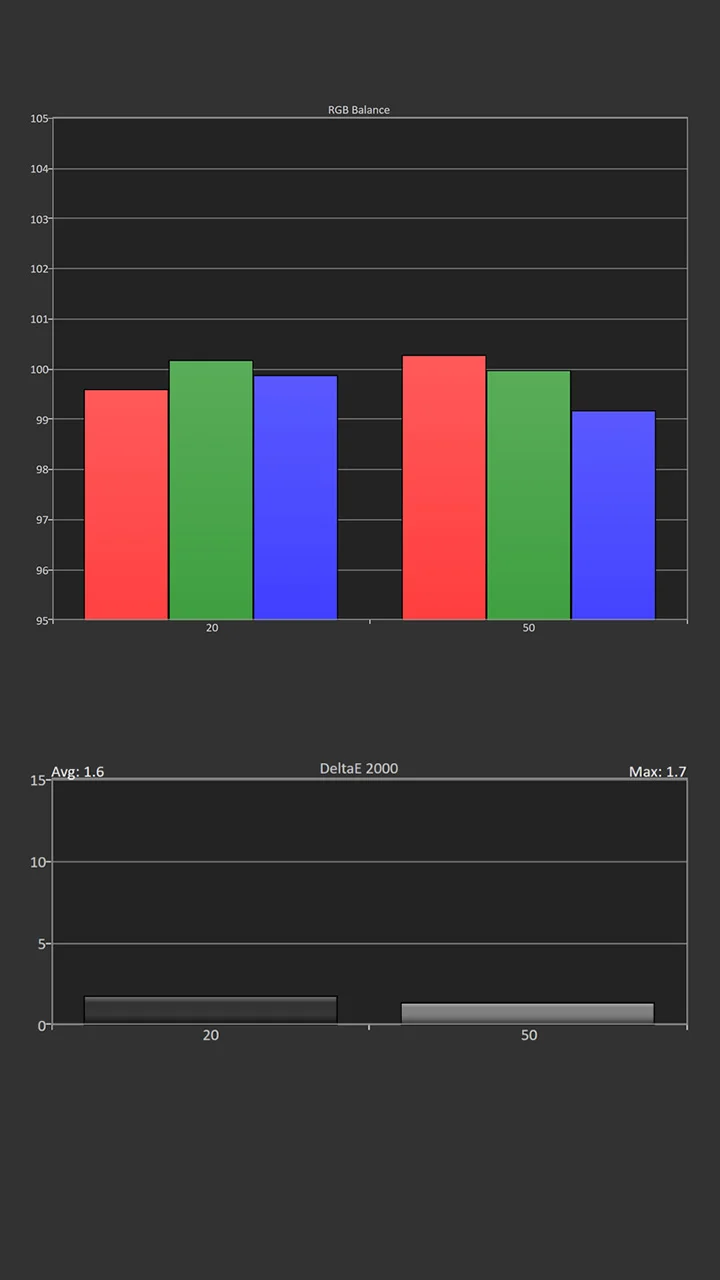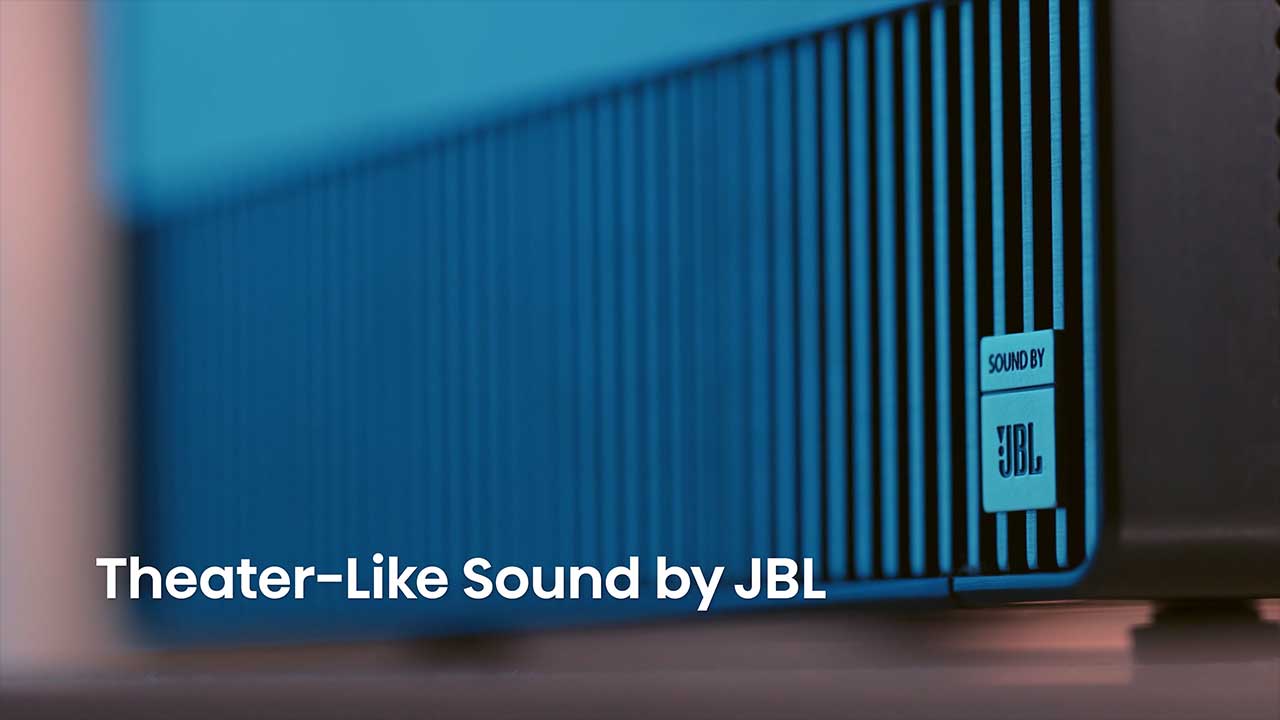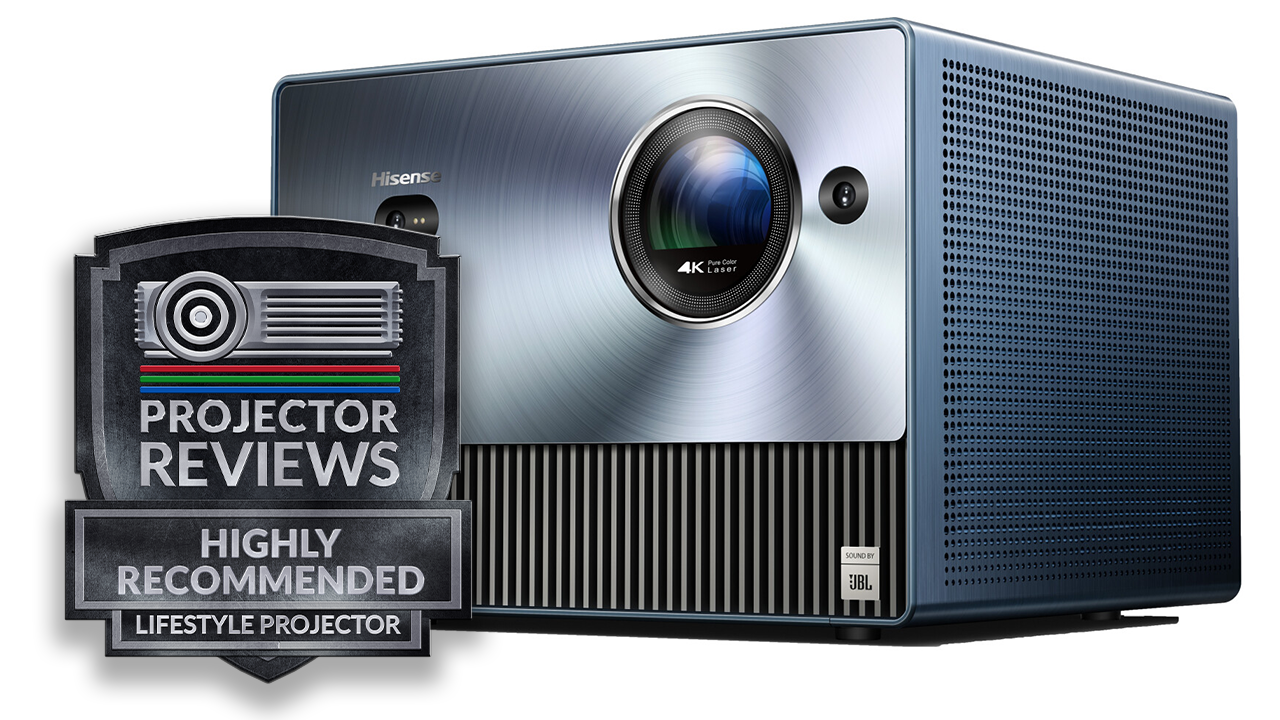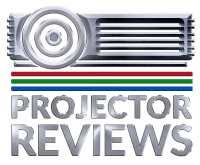The Hisense C1 is the company's first entry into the blossoming lifestyle projector market. It features a sleek, modern design that stands out from the competition, with high-quality brushed blue aluminum covering a large part of the projector body. Based on my testing, I think the C1 is a formidable contender in the compact projector market with its combination of picture and sound quality and impressive features.
One of the standout features of the Hisense C1 is its excellent color quality. The projector delivers vivid, true-to-life colors consistent across a wide range of content. The C1 achieves remarkable color accuracy and saturation thanks to advanced color processing technologies, bringing movies, TV shows, and games to life. Whether I watched a vibrant animated film or a nature documentary, the colors the C1 produced were deep, dynamic, and captivating.
This projector does not require the user to do a lot of visual setup because the C1's out-of-the-box picture preset modes are carefully tuned at the factory. Movie-centric modes like FILMMAKER, CINEMA DAY, and CINEMA NIGHT displayed pleasantly warm images that seemed to pop off my matte white projection screen. I must credit this projector's excellent out-of-the-box color quality to the Hisense Trichroma RGB laser light engine that powers it.
Brightness on the C1 measured in line with the manufacturer's rated 1,600 ANSI lumens. However, while that is on par with most other lifestyle projectors, I hoped Hisense would offer more. This projector looks great in a light-controlled space. And even in a room with modest amounts of uncontrolled ambient light, the picture remains watchable. However, once more than a few lights are introduced, color and contrast quality drop so that even the projector's brightest DYNAMIC mode can't keep up.
The C1's black levels are above average for this type of projector. Its respectable black levels create a more immersive viewing experience, especially in dark scenes. While it may not match the absolute blacks seen in some high-end models, the C1's performance in this area is commendable for its price range.
The Hisense C1 impressively supports Dolby Vision, HDR10, and HLG High Dynamic Range. While HDR is particularly hard to do on a projector, Hisense, more than most, seems to be able to feature HDR modes that show a visible difference to SDR in dark and bright area detail, which is particularly impressive. However, this comes at a cost in brightness, which I did not want to give up even in a light-controlled space.
Overall, I preferred the projector set in SDR, with my most used modes being the movie-centric modes and STANDARD mode for sports and animated content, with enhanced contrast and a wider color gamut that made for a more dynamic and immersive viewing experience. SDR content also benefits from the C1's excellent color rendering and brightness, ensuring that even non-HDR content looks great.
The Hisense C1's built-in speakers produce a clear, powerful sound that can easily fill a medium-sized room. The audio quality is balanced, with enough mid-bass to add depth to movies and game soundtracks. The projector features a nice range of audio adjustments from six preset modes to eleven different sound adjustments designed to enhance bass, compensate for projector position, and allow users to get big sounds that retain sufficient dialogue clarity. If you are like me and want a projector that can offer an onboard immersive sound experience, the C1 is more than capable. For those times when you want to connect to external sound systems, the C1's support for Dolby Atmos and eARC connectivity makes it an easy choice.
The Hisense C1 projector is a compelling option for anyone looking to upgrade their home entertainment setup. It excels in design, color quality, black levels, and SDR picture quality while delivering impressive sound in partnership with JBL. While the Hisense C1 has an MSRP of $2299, it often has a street price of around $1800, which makes it an even better value. Whether for movies, gaming, or casual viewing, the Hisense C1 offers a well-rounded performance that rivals other lifestyle projectors.
BENQ GP500 $1,699 MSRP
The GP500 produces an excellent picture in a completely dark room or with a small amount of uncontrolled ambient light. It is similar to the C1 in that it does well with ambient light sources in the room. However, the C1 holds up to a higher level of uncontrolled ambient light than the GP500. This difference may be because BenQ uses an LED light source while Hisense uses a Trichroma RGB laser light source.
One of the big advantages that the BenQ GP500 offers over the Hisense C1 is that it is a short-throw projector, so if you're in a situation where you have limited space between your seating and the screen, this projector offers the ability to project an incredibly large image in a small space.
Like the C1, the GP500 comes with excellent factory calibration. BenQ engineers are top-tier in color science, which shows in the GP500's color performance. Like many DLP projectors, this projector's colors are rich without being overly saturated. Both the Hisense and BenQ provide a robust color management system.
The BenQ GP500 is not your typical projector design. BenQ has managed to shrink the size of the projector and change its shape away from the usual rectangular slab we so often see. The GP500's built-in 5-watt Bongiovi DPS 3D surround sound is excellent and on par with the JBL sound system of the C1.
Finally, the BenQ fully supports the Android ecosystem with full access to the Google Play store and the thousands of apps, games, and streaming content I want on a home entertainment projector, while the C1 does not.
XGIMI HORIZON ULTRA $1,699 MSRP
The XGIMI Horizon Ultra is a 4K DLP projector that retails for $1699. The XGIMI Horizon Ultra, offers a brightness of 2300 ISO lumens which, based on our testing, comes out to 2335 ANSI lumens of brightness. Based on the Horizon Ultras hybrid laser and LED light source, this projector should perform better than the C1 higher amounts of ambient light. Other than the brightness advantage I think the Hisense C1 had better out-of-the-box color than the XGIMI but with some calibration the XGIMI can look as good.
XGIMI has always been focused on expanding the projection market to include those users who don't typically seek out projectors. Since XGIMI's goal is to broaden the user base of projectors beyond the traditional market, projectors like the Horizon Ultra include all the features found in conventional flat-panel TVs, including Android TV and built-in sound systems. In addition, they are ultra-compact units that can be quickly set up in any room and projected onto a screen or a wall (even one painted a color).
XGIMI’s non-traditional approach to designing home entertainment projectors is helping the company become a leading global projector manufacturer. The Horizon Ultra is XGIMI's new flagship home projector, so it included several technical firsts highlighting their engineering expertise. Although the shape of each projector is different, the overall volume of the two units is about the same, so I’m going to call this point a draw.
The Horizon Ultra is equipped with an automatic iris that improves the unit's black level when viewed in a darker environment while maximizing the projector’s brightness in rooms with ambient light when the black level is not as important. However, the Horizon Ultra cannot match the native contrast and deep black levels of more expensive 3LCD & LCOS-based projectors. I have to give the black-level edge to Hisense between the two projectors but only slightly.
The Horizon Ultra offers outstanding picture quality for its price point and is the best projector we have reviewed from XGIMI. The Horizon Ultra is feature-packed (optical zoom, Iris, Hybrid Laser-LED light source), which makes it an amazing value at its 1,699 MSRP.

